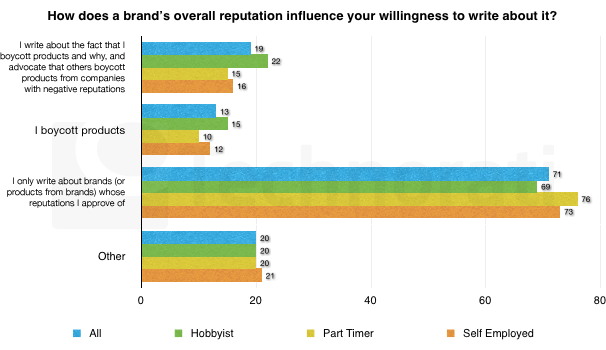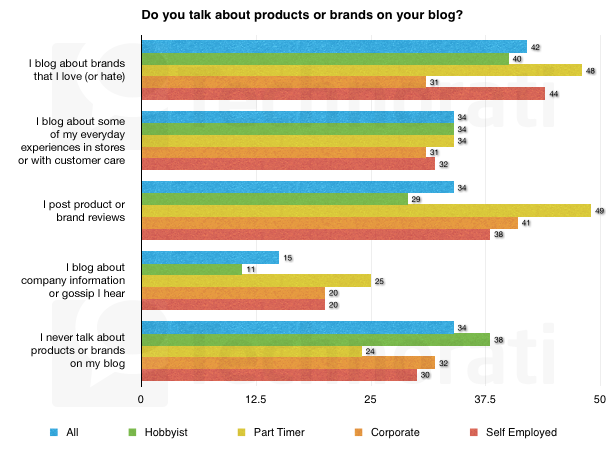- Keeping Yahoo! Brand Value AliveI read an interesting article about Yahoo! last week on BrandWeek that asked various business experts to weigh in on whether or not new leadership is the band-aid needed to bring the company back to its former position of strength. The responses were all fairly similar and match my own feelings about how to fix […]

Using Bloglines? Please don’t forget to choose a new feedreader, and to move the Corporate Eye feed across, so you don’t lose touch with us. - Book Review: Eradicating EcocideThere was absolutely no doubt in Polly Higgins’ mind as she mounted the makeshift dais at the book launch of “Eradicating Ecocide”. There is only one way to deal with business executives whose companies are wilfully destructive of the environment: prison.
“We need the punishment to be incarceration,” she stated, referring to business leaders who commit […]
Using Bloglines? Please don’t forget to choose a new feedreader, and to move the Corporate Eye feed across, so you don’t lose touch with us. - The Global Gender Gap ReportThe fifth annual Global Gender Gap Report from the World Economic Forum (WEF) “assesses 134 countries on how well they divide resources and opportunities amongst male and female populations.” The report measures the gender inequality gap in four areas:
Economic participation and opportunity
Educational attainment
Political empowerment
Health and survivalGood news: The United States has finally broken into […]

Using Bloglines? Please don’t forget to choose a new feedreader, and to move the Corporate Eye feed across, so you don’t lose touch with us. - Lipton Makes Brand Guidelines Fun with an iPhone App and a Million Dollars in Virtual SalesLipton is a well-known brand that promises decent tea. but Lipton had a problem. As DDB Hong Kong describes, “Lipton approached us with a problem: no one was reading their brand guidelines. However, when was the last time anyone got excited by brand guidelines? … We created something completely unheard of — brand […]

Using Bloglines? Please don’t forget to choose a new feedreader, and to move the Corporate Eye feed across, so you don’t lose touch with us. - Does your corporate site comply with Twitter guidelines?You have brand guidelines, don’t you? Or, more specifically, guidelines for how your corporate identity can be used?
Many companies do, and post these on their corporate sites.Here’s a straightforward way of doing it: Yara provide their logo in EPS and PNG formats, explain the meaning of the logo, give us the colour reference, and provide […]

Using Bloglines? Please don’t forget to choose a new feedreader, and to move the Corporate Eye feed across, so you don’t lose touch with us.
Brands, Bloggers and Consumers – 2010 State of the Blogosphere
Technorati has released its annual State of the Blogosphere report, and the results from 2010 tell us that blogging isn’t going away anytime soon. In fact, the world of blogging is growing to include more and more influential voices every day. This is an audience that can have a significant effect in word-of-mouth marketing and brand advocacy, but according to the report, 64% of bloggers believe they are treated “less professionally by brand representatives than are the traditional media.” In fact, only 33% of bloggers who responded to the Technorati survey indicated that a brand has ever approached them to write about their business, products, services, and so on.
Sounds like a significant opportunity is being overlooked by most brands. Instead of brands engaging bloggers who have established broad reaches across the online space, many brands are still ignoring bloggers. Given the fact that, as the 2010 State of the Blogosphere reports (see the chart below), bloggers are more than willing to write about brands they approve of, proactively interacting with them can only help a brand.

More specifically, bloggers write about their personal interactions with brands (both online and offline) and about company rumors they hear as evidenced by the data in the chart below.

If they’re already talking about your brand or brands like yours, why not give them more great information to share? Find the bloggers that are talking about products and services related to your own brand and interact with them. Building a band of brand advocates with the help of online influencers, including bloggers, can have a significant impact on your long term brand goals. It’s amazing what an online conversation can grow to. Use those conversations to your brand’s advantage before another brand does.
What do you think? Leave a comment and share your opinion.
Keeping Yahoo! Brand Value Alive
 I read an interesting article about Yahoo! last week on BrandWeek that asked various business experts to weigh in on whether or not new leadership is the band-aid needed to bring the company back to its former position of strength. The responses were all fairly similar and match my own feelings about how to fix Yahoo! The consensus seems to be that Yahoo! lacks focus.
I read an interesting article about Yahoo! last week on BrandWeek that asked various business experts to weigh in on whether or not new leadership is the band-aid needed to bring the company back to its former position of strength. The responses were all fairly similar and match my own feelings about how to fix Yahoo! The consensus seems to be that Yahoo! lacks focus.
Focused brands are powerful brands. They own a word or phrase in consumers’ minds and deliver on consumer expectations for the brand promise with every brand interaction.
The question these days for Yahoo! is — what does the Yahoo! brand promise? The answer is unclear. Is Yahoo! a search company or a media company? Is it a news organization or an editorial organization? Consumers aren’t certain, and that leads to confusion. When consumers are confused by a brand, they turn away from it in search of a brand that meets their expectations for it again and again.
So what can Yahoo! do to save itself? There is far too much value in the Yahoo! name to let it go, and one can only point the finger at ineffective leadership insofar as that leadership doesn’t demand focus. Yahoo! still attracts eyeballs and it still attracts advertisers, but the muddled brand is at a crossroads. It’s time for Yahoo! to pick a path and get going.
I wrote a book about the value of the Playboy brand, and the Yahoo! story isn’t too dissimilar from the Playboy story in that it’s a brand that lost focus. I don’t discredit Yahoo! from moving away from search into new directions, but the brand lost itself along the way just as Playboy did. That’s a common problem for publicly-held companies whose stockholders demand double-digit growth year over year. Only time will tell if the appropriate changes can be made to re-focus both brands on promises that not only allow the brands to survive but thrive over the coming years.
What do you think? Can Yahoo! be fixed? Leave a comment and share your thoughts.
Book Review: Eradicating Ecocide

There was absolutely no doubt in Polly Higgins’ mind as she mounted the makeshift dais at the book launch of “Eradicating Ecocide”. There is only one way to deal with business executives whose companies are wilfully destructive of the environment: prison.
“We need the punishment to be incarceration,” she stated, referring to business leaders who commit Ecocide. But what exactly is Ecocide and how do you commit it?
The book, “Eradicating Ecocide” gives you all the answers you need, and it does so in a measured and well argued way. This is because its author, Polly Higgins (pictured), is a lawyer with a deep understanding and firm grasp of international environmental law.
So, the book isn’t another wild diatribe against business … rather it is an examination of international law and how environmental protection has somehow been left by the wayside.
In the process it points out various loopholes commercial interests may have got used to, and asks business leaders to examine them and ask some deeper questions about the meaning of responsible business.
Definition of Ecocide
Interference in an area’s political, territorial and sovereign self determination are all defined within the United Nations charters as crimes against peace. These definitions include the concept of genocide, the deliberate extermination of a people in order to further political or commercial gain. However, to deliberately sabotage the land those people rely upon is a far less clear cut issue, although the results can be just as devastating.
This, put simply, is Ecocide.
You need only to think of the ongoing debate surrounding the slow, lingering death oil pollution is causing in the Niger Delta to get the point. Why should it be “Not OK” to massacre a culture because it stands in the way of commercial gain (like the imperialists of old) but “OK” to poison the environment upon which that culture relies?
The Sharp End of Ecocide
There is one argument that it is not up to companies per se to clean up the environmental devastation their operations cause, providing they provide sufficient funds and support to enable the civil authorities to affect the clean up on behalf of their citizens. This is what lies at the heart of the Chevron/Ecuador dispute.
However “Eradicating Ecocide” goes one step beyond, seeking to bust what can be painted as a mitigation-orientated culture. Instead of cleaning up the mess, why not just make creating the mess illegal in the first place?
That, coupled with the imprisonment of culpable executives, would change attitudes towards commercial pollution more radically than sustainability standards or voluntary measures, the book argues.
This is the way “small scale” environmental law is going, with more and more companies being fined more and more heavily for breaching waste and water regulations. Why, the argument may come soon, should specific industries be targeted but general ones not?
The clock to ensure the Earth remains healthy enough to support humankind is already ticking. This book asks everyone to re-examine the legal framework within which we are attempting to accomplish this, and provides business leaders with a golden opportunity of making it happen.
Eradicating Ecocide is available from Amazon and leading bookstores.
The Global Gender Gap Report
The fifth annual Global Gender Gap Report from the World Economic Forum (WEF) “assesses 134 countries on how well they divide resources and opportunities amongst male and female populations.” The report measures the gender inequality gap in four areas:
- Economic participation and opportunity
- Educational attainment
- Political empowerment
- Health and survival
Good news: The United States has finally broken into the Top 20, after hovering around 30 for the first four years of the report.
Bad news: The United Kingdom has tumbled from a ranking of 9 in 2006 to #15 this year.
Great story: The tiny Kingdom of Lesotho has advanced from #43 in 2006 to (drum roll, please) #8 in 2010. Lesotho has just two million people and only a modest economy—but its literacy rate is among the highest in Africa.
More good news: Looking across the board at progress made since the first report, it turns out that gaps are closing in health and education, with current data showing that (in the 134 countries covered) 96% of health gaps and 93% of education gaps have been closed.
More bad news: Only 60% of economic participation gaps have been closed.
WEF also publishes a Corporate Gender Gap report, which is based on a survey of HR execs from 600 major employers in twenty countries, representing sixteen industries, and ranging in size from 1,000 to 30,000 employees. The survey’s 25 questions assessed companies on:
- representation of women within their establishments
- the use of gender-equality practices such as measurement and target-setting, work-life balance policies and mentorship and training
The survey also gathered respondent opinions on:
- the biggest barriers to women’s leadership
- the probable effects of the economic downturn on women’s employment in their countries and industries.
The resulting report is not only informative but actually very interesting. It provides detailed summaries of the findings by country and by industry. From the report website you can download the whole report or a summary chapter.
High-level observations from report co-author Saadia Zahidi: “The findings of the report are an alarm bell that the corporate world is not doing enough to achieve gender equality. While a certain set of companies in Scandinavia, the US and the UK are indeed leaders in integrating women, the idea that most corporations have become gender-balanced or women-friendly is still a myth. With this study, we are giving businesses a one-stop guide on what they need to do to close the corporate gender gap.”
My favorite factoid: Averaging all respondents, the top two “barriers to women’s rise to positions of senior leadership in your company” were identified as
- General norms and cultural practices in your country
- Masculine/patriarchal corporate culture
And amazingly enough—those were the top two choices in the US, and two of the top three in the UK. Something to think about . . .
(That snow-covered landscape is the Afri-Ski resort in Lesotho!)
Lipton Makes Brand Guidelines Fun with an iPhone App and a Million Dollars in Virtual Sales
 Lipton is a well-known brand that promises decent tea. but Lipton had a problem. As DDB Hong Kong describes, “Lipton approached us with a problem: no one was reading their brand guidelines. However, when was the last time anyone got excited by brand guidelines? … We created something completely unheard of — brand guidelines that are actually fun and engaging.”
Lipton is a well-known brand that promises decent tea. but Lipton had a problem. As DDB Hong Kong describes, “Lipton approached us with a problem: no one was reading their brand guidelines. However, when was the last time anyone got excited by brand guidelines? … We created something completely unheard of — brand guidelines that are actually fun and engaging.”
How did DDB Hong Kong do it? They created an iPhone app and gave every Lipton brand manager in the Asia Pacific region an iPhone. The “Lipton Millionaire” app included an interactive version of the “Lipton Voice” brand guidelines to study and a game which challenged Lipton brand managers about their knowledge of the Lipton brand and allowed them to compete against each other in a virtual game to win one million dollars in virtual sales.
According to DDB Hong Kong, knowledge of the Lipton brand is at an all-time high and excitement and belief in the brand promise from the most powerful brand advocates — employees — is undoubtedly higher, too.
You can check out the Lipton Millionaire video here or check it out on the Lipton Millionaire website.
What do you think? Would an iPhone app help your brand managers better understand your brand guidelines or help turn them into powerful brand advocates? It worked for Lipton. It’s unfortunate that the effort only involved brand managers. While they certainly need to understand the brand guidelines, all employees should be educated about the brand and why guidelines are important. Afterall, an employee doesn’t have to be a brand manager to be a powerful brand advocate. Give them the chance to learn, embrace, and believe in your brand, and they just might advocate it for you.
Leave a comment and share your thoughts.

